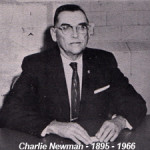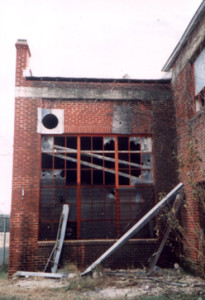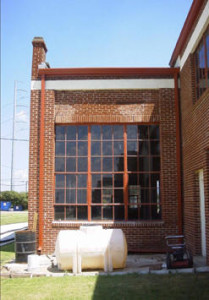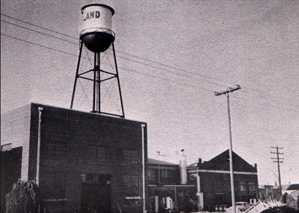Currently in need of extensive repairs, the power plant building at 525 West Avenue A has played a significant part in Garland’s history. Built in 1923, it was the city’s sole source of electricity for many years. Through those years, the building saw several additions as Garland’s population increased and it now spans more than 9,000 square feet.
The plant grew with Garland’s population and power service was continually being upgraded. It was expanded in 1930, 1948 and 1954.
As the city’s growth continued, newer and bigger plants were needed and the power plant was officially closed in the late 1970’s. Since then, the building has been vacant. Various ideas for use of the facility for everything from restaurants, mixed use facilities, office space, retail space and loft apartments have been presented, but none have come to fruition. The power plant has survived at least two votes of demolition.
The facility is an integral part of the history of Garland and owes much of its success to Charlie Newman who ran it from its construction until 1963. Newman oversaw building improvements, equipment additions and upgrades to the facility. It is widely believed that he is one of the major contributors to the success of the power company and the effect that it has had on Garland’s history.
success of the power company and the effect that it has had on Garland’s history.
William P. Lord, who wrote “Charlie Newman and the Town Pump” for the Garland Civic Action Association in 1966, shared, “Garland’s heritage of yesterday and yesteryear was personified in him [Newman].”
In the early 1950s Garland suffered an extreme drought which rendered the water wells dry. A new dam and power station were built and used for most of the city’s power needs. The original Garland power plant was used as a backup until the 1970s when some of the generators were sold and the plant closed.
Since its closure, the 92-year-old building has endured cycles of repair an d neglect with different owners and the city of Garland performing significant work to make it presentable but it continues to sit empty.
d neglect with different owners and the city of Garland performing significant work to make it presentable but it continues to sit empty.
A 1991 photo illustrates the extent of disrepair at that time. The windows were broken and the area around the site was scattered with trash. There were holes in the walls and the site was enclosed with barbed wire to prevent further vandalism. Another photo shows the same area of the building after extensive repairs.
Another fact that contributes to the significance of the history of the facility is that Garland’s jail was housed in the east end of the power plant. Adding to the character of the building, the bars on the jail windows remain intact. The exterior of the jail has been covered with stucco and the entrance is now from inside the power plant as the main door has been concealed.
The current owners, Wayne and Steve Landin, purchased the building with the hope of finding a developer interested in restoring it for a new use. Soon after they bough t the property, the 2008 economic collapse hit and it became difficult for prospective developers to borrow money. However, according to Steve, interest has now increased and potential buyers have looked at the property for uses including a high-end restaurant, a winery and a brewery.
t the property, the 2008 economic collapse hit and it became difficult for prospective developers to borrow money. However, according to Steve, interest has now increased and potential buyers have looked at the property for uses including a high-end restaurant, a winery and a brewery.
The history of the power plant is not well known to most Garland residents and it deserves to be shared with the city’s population. The small power company that was housed in the building, originally created to supply power for the town’s water system, has grown into one of Texas’ largest municipally-owned utilities. Additionally, revenue from Garland Power & Light contributes significantly to the city’s revenue.
Source: A Return to Power – Adaptive Reuse of a Vacant Power Plant – An Architectural Thesis by David Tobin, AIA, Ron Hobbs Architects


